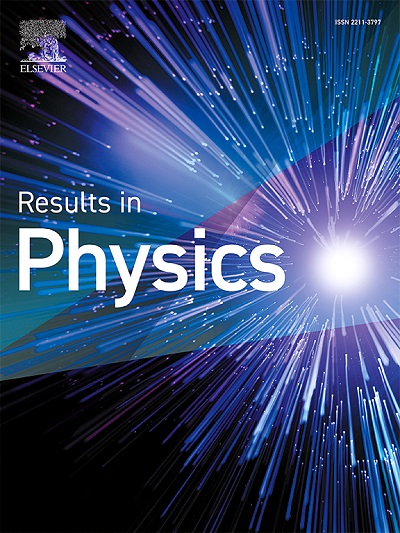Investigating epidemic model of infectious disease for stability analysis and approximation solution
IF 4.4
2区 物理与天体物理
Q2 MATERIALS SCIENCE, MULTIDISCIPLINARY
引用次数: 0
Abstract
In the current work, we formulate a fractional order model via the use of fractional Mittag-Leffler derivative (FMD) to describe the dynamics of Chikungunya virus. We investigate existence, uniqueness, positivity and boundedness of the concerned model. We identify threshold conditions for the endogenous persistence vs eradication of the virus, and predict the potential for outbreaks by computing reproduction numbers . Besides this, we also study the stability by determining the condition on which disease-free equilibrium stays stable. A comparative study and sensitivity analysis are also given in detail in the work. We conduct numerical simulations using a two-step Lagrange polynomial method that can efficiently investigate the dynamics of the specified model. Our findings highlight the role of fractional calculus (FC) in epidemiological models, which incorporate memory effects and genetic trait, and can lead to more accurate forecasts as well as efficacious public health policy. These findings not only support the theoretical foundation of infectious disease modeling, but also serve as a launching point for future research on other vector-borne diseases. We offer predictions of the model for different fractional orders, demonstrating how alterations in these orders affect the model predictions.
研究传染病流行模型的稳定性分析和近似解
在目前的工作中,我们通过使用分数阶Mittag-Leffler导数(FMD)建立了一个分数阶模型来描述基孔肯雅病毒的动力学。研究了该模型的存在性、唯一性、正性和有界性。我们确定了病毒内生持久性与根除的阈值条件,并通过计算繁殖数(R0)预测爆发的可能性。除此之外,我们还通过确定无病平衡保持稳定的条件来研究其稳定性。并进行了详细的对比研究和敏感性分析。我们使用两步拉格朗日多项式方法进行数值模拟,可以有效地研究指定模型的动力学。我们的研究结果强调了分数微积分(FC)在流行病学模型中的作用,该模型包含记忆效应和遗传特征,可以导致更准确的预测以及有效的公共卫生政策。这些发现不仅为传染病建模提供了理论基础,也为今后对其他病媒传播疾病的研究提供了起点。我们提供了不同分数阶的模型预测,展示了这些阶的变化如何影响模型预测。
本文章由计算机程序翻译,如有差异,请以英文原文为准。
求助全文
约1分钟内获得全文
求助全文
来源期刊

Results in Physics
MATERIALS SCIENCE, MULTIDISCIPLINARYPHYSIC-PHYSICS, MULTIDISCIPLINARY
CiteScore
8.70
自引率
9.40%
发文量
754
审稿时长
50 days
期刊介绍:
Results in Physics is an open access journal offering authors the opportunity to publish in all fundamental and interdisciplinary areas of physics, materials science, and applied physics. Papers of a theoretical, computational, and experimental nature are all welcome. Results in Physics accepts papers that are scientifically sound, technically correct and provide valuable new knowledge to the physics community. Topics such as three-dimensional flow and magnetohydrodynamics are not within the scope of Results in Physics.
Results in Physics welcomes three types of papers:
1. Full research papers
2. Microarticles: very short papers, no longer than two pages. They may consist of a single, but well-described piece of information, such as:
- Data and/or a plot plus a description
- Description of a new method or instrumentation
- Negative results
- Concept or design study
3. Letters to the Editor: Letters discussing a recent article published in Results in Physics are welcome. These are objective, constructive, or educational critiques of papers published in Results in Physics. Accepted letters will be sent to the author of the original paper for a response. Each letter and response is published together. Letters should be received within 8 weeks of the article''s publication. They should not exceed 750 words of text and 10 references.
 求助内容:
求助内容: 应助结果提醒方式:
应助结果提醒方式:


